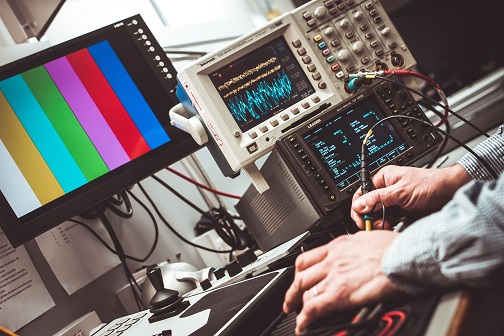Inverter: 15 Functions Beyond “Inverter”

Inverter is a converter that converts DC power (battery, storage battery) into constant-frequency constant-voltage or frequency-modulated and voltage-regulated AC power (usually 220V, 50Hz sine wave). It is alternating current (AC) and is widely used in household appliances, power tools, computers, lighting, etc. Conversely, a converter that converts alternating current into direct current is called a converter.
Since most power generation processes generate direct current, and the grid transmits alternating current, solar, wind, and energy storage facilities require inverters.
In a power generation system, the purpose of an inverter is to convert direct current to grid compatible alternating current. In addition to “inversion”, it can assume more roles.
- Adjust the 1,000 or 1,500 volts of the PV string to the (AC) grid voltage: China, Europe low-voltage grids run at standard 220 volts (single-phase grid) or 400 volts (three-phase grid), USA, Japan and some others State is 110 volts.
- Depending on the size of the solar power system, we can connect the inverter directly to the grid for medium voltage (from 1 to 40 kV). The higher the grid voltage, the larger the transformer needed to regulate the AC voltage of the inverter. Some large PV ground plants use large inverters and substations to supply power at high voltage (over 110 kV).
- Adjust the AC frequency to the grid frequency (synchronized): 50 Hz for China, European standards, 60 Hz for US and Japan.
- Optimize PV module string yield through maximum power point tracking (MPPT). This involves keeping the IV curve of the solar voltage and the current in the solar panel at maximum power at all times, thus keeping the power generation at maximum. Each string can correspond to a separate MPP tracker of the inverter.
- Control PV arrays in case of grid instability: Photovoltaic power generation can help stabilize unstable grids. If there is too much power in the grid, the grid will disconnect the photovoltaic installation. If the voltage or frequency is too weak, the photovoltaic power generation facility will supply power at full capacity. We can exploit this effect to a greater extent. In order to stabilize the grid if large batteries combines to it.
- The inverter also undertakes switching tasks if the grid suffers short-term or long-term failures. Combined with energy storage facilities, we can use photovoltaic power as an uninterruptible power supply, which is important for industrial and commercial applications and in areas storms floods or other natural disasters often affects.
- Together with energy storage, inverters can optimize the self-consumption of solar energy. Feed back only the excess power into the grid or control a self-sufficient microgrid.
- In addition, smart inverters allow the direct use of direct current from solar power to charge energy storage or electric vehicles.
- The inverter also includes important functions for the technical protection of photovoltaic installations. Regulations may vary from country to country.
- The data collection function of the inverter can digitize the power generation at every moment. Also, it can access the data to the Internet through the built-in router. So that users can monitor the power generation implementation remotely or on the mobile phone.
- Automatic operation and stop function: the inverter can set the threshold value and stop working. When the power generation starts from zero in the morning or becomes zero in the evening.
- The solar panels of photovoltaic power generation may produce PID effects and cause the power generation to drop. We generally prevent it by the technical improvement of the components and the battery side. However, from the inverter side, it is also possible to prevent the generation of PID. And to perform PID recovery after PID occurs to minimize PID loss. This is the meaning of Anti-PID and PID elimination functions on the inverter side.
- When disturbance causes a voltage sag, the inverter can ensure the photovoltaic power station. Which happens at the grid connection point of the photovoltaic power station, within a certain voltage drop range and time interval. Continuous operation without off-grid. This is the definition of zero (low) voltage ride-through function.
- Detection and control of islanding effect: During normal power generation, the photovoltaic grid-connected power generation system is connected to the large power grid and transmits active power to the grid. However, when the grid loses power, the photovoltaic grid-connected power generation system may continue to work. And islanding effect is a phenomenon that the local load is in a state of independent operation. When the islanding effect occurs, it will cause great safety hazards to personal safety and the inverter itself. Therefore, photovoltaic grid-connected inverter must have the detection and control function of the islanding effect. According to the grid connection standard of the inverter.
-
- The inverter can also provide DC bus overvoltage protection, AC overvoltage and undervoltage protection. As well as AC frequency protection, reverse polarity protection, short circuit protection, overtemperature protection, DC overload protection, etc. for the photovoltaic system.



